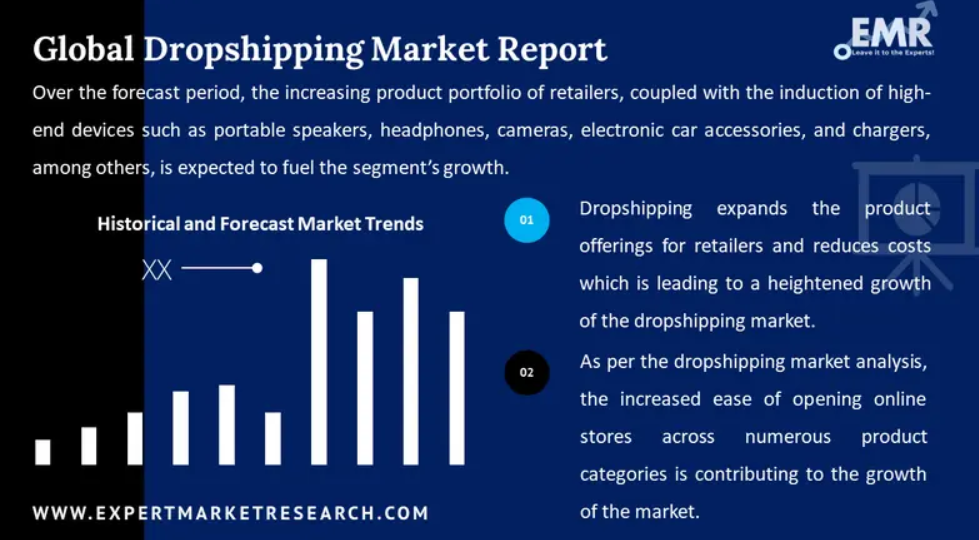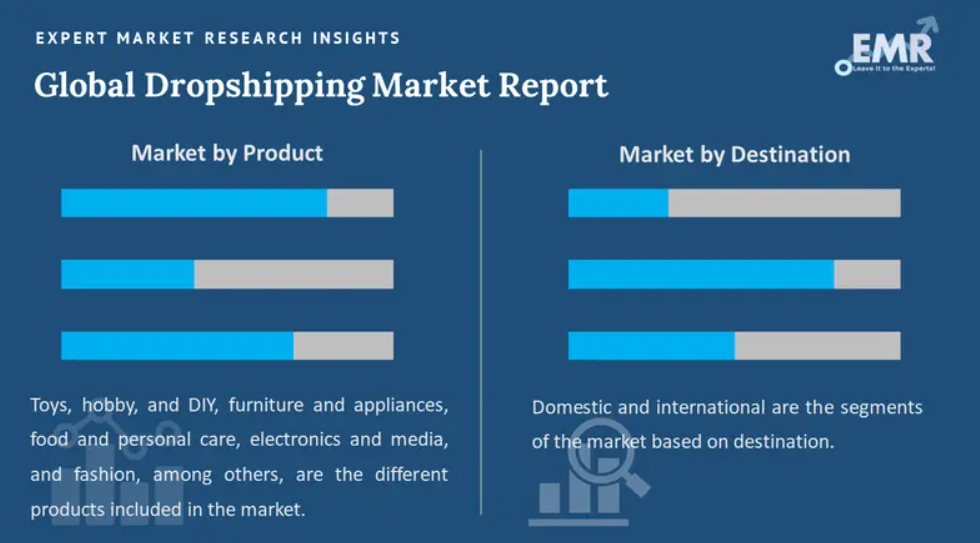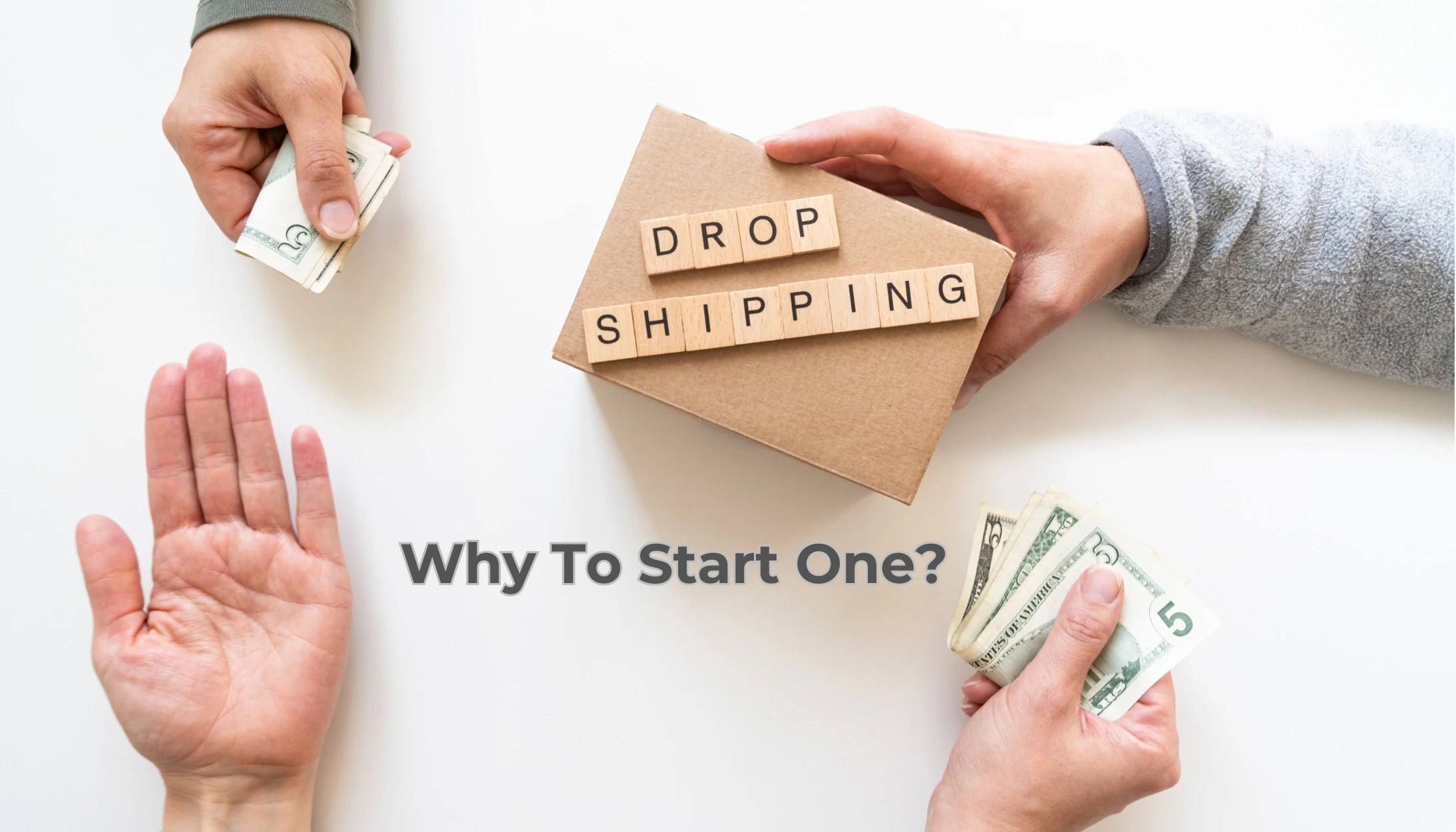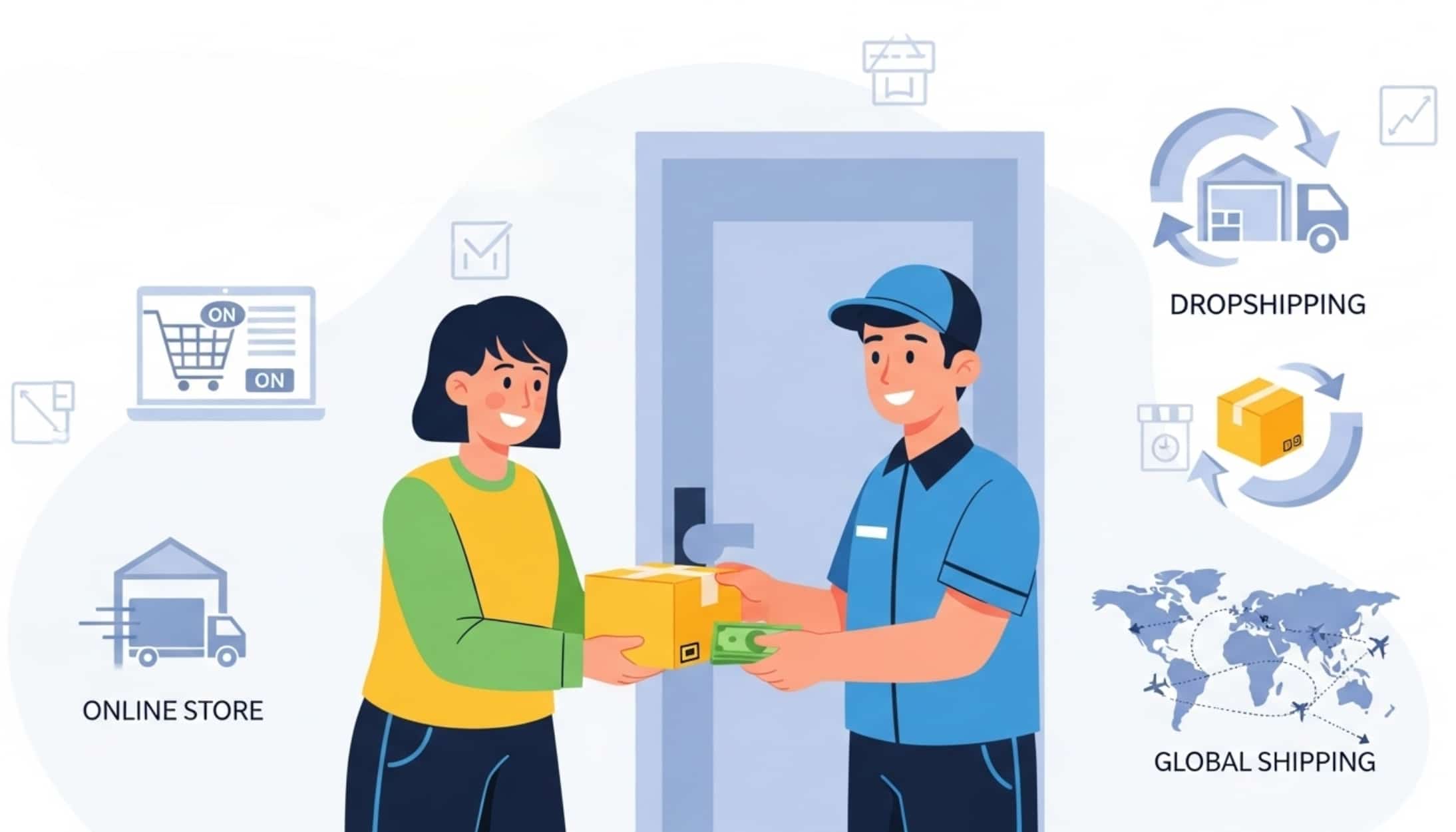We’re here to provide a comprehensive understanding of what is dropshipping business, covering its fundamentals, reasons for starting, and practical steps on how to launch and manage it successfully.
Dropshipping is a well-liked business strategy because of its straightforward company plan, inexpensive initial expenses, and absence of overhead. Dropshipping is a viable business alternative for those who are enthusiastic about bootstrapping a new project. The best part is that dropshippers can sell a wide variety of goods without ever needing to buy or stock any inventory.
We’ll show you how to launch a dropshipping company from the ground up in this guide.
Table of Contents
What is dropshipping Meaning?
Dropshipping is a way to run an online store without having to keep any products in stock. Here’s how it works:
- Customer Buys from Your Store: When someone buys something from your online store, you don’t have the item with you.
- Order Goes to Supplier: You send the order to a supplier who has the item in their warehouse.
- Supplier Ships the Product: The supplier ships the item directly to your customer.
In dropshipping, you act like a middleman. You take the customer’s order and money, and then you pay the supplier to sell products. This way, you don’t need to worry about storing, packing, or shipping the products yourself. It’s a simple way to sell products online with less hassle!
What is dropshipper?
In dropshipping business a dropshipper act as a supplier or wholesaler that fulfills orders on behalf of a retailer or e-commerce store. Instead of stocking inventory management and handling shipping themselves, retailers partner with dropshippers who ship products directly to customers.
In a dropshipping arrangement, the retailer markets and sells the products, while the dropshipper handles inventory management, packaging, and shipping. This allows retailers to operate without the need for a physical inventory, reducing upfront costs and logistical complexities. Dropshipping has become popular in e-commerce due to its low barrier to entry and flexibility for retailers to sell a wide range of products without the need for large investments in inventory.
How To Start Dropshipping Business?
Market Research
Before starting a dropshipping business, it’s crucial to understand the market research and identify a niche with potential demand but low competition. Use tools like Google Trends, social media platforms, and market research tools to analyze trends and customer preferences.
Choosing a Niche
Selecting the right niche can determine your dropshipping business’s success. Consider the following factors:
- Passion and Interest: Choose a niche you are passionate about to stay motivated.
- Market Demand: Ensure there is a consistent market demand for the products.
- Competition: Find a balance between demand and competition. Avoid overly saturated markets unless you have a unique selling proposition.
- Profit Margins: Consider the profit margins of the products in your niche.
Finding Reliable Suppliers
Your suppliers are the backbone of your dropshipping business. Ensure they are reliable and offer product quality. Here are some tips:
- Research: Use directories like AliExpress, Oberlo, SaleHoo, and Doba to find suppliers.
- Contact Suppliers: Reach out to potential suppliers to discuss terms, shipping times, and return policies.
- Order Samples: Test the product quality and shipping time by ordering samples.
- Check Reviews: Look for supplier reviews and ratings on platforms like Alibaba and Trustpilot.
Creating Your Online Store
Setting up a professional online store is essential. Here are steps to create your store:
- Choose an eCommerce Platform: Popular platforms include Fathershops, WooCommerce (WordPress), BigCommerce.
- Domain Name: Select a unique and relevant domain name for your store.
- Design and Customize: Use themes and templates to design your store. Ensure it is user-friendly and mobile-responsive.
- Product Listings: Add high-quality images, detailed descriptions, and competitive pricing for your product listings. Organize products into categories for easy navigation.
- Legal Pages: Include important pages like Privacy Policy, Terms of Service, and Return Policy.
Setting Up Payment Gateways
Integrate secure and reliable payment gateways to process customer transactions. Popular options include:
- Fatherpay
- PayPal
- Stripe
Ensure the payment process is smooth and offers multiple options to cater to a wider audience.
Marketing Your Store
Effective marketing is crucial to drive traffic and sales. Here are some strategies:
- SEO (Search Engine Optimization): Optimize your website for search engines by using relevant keywords, creating quality content, and building backlinks.
- Social Media Marketing: Promote your products on platforms like Instagram, Facebook, Pinterest, and TikTok. Use targeted ads to reach your audience.
- Content Marketing: Create valuable content such as blog posts, videos, and infographics to attract and engage your audience.
- Email Marketing: Build an email list and send regular newsletters with updates, promotions, and product recommendations.
- Influencer Marketing: Collaborate with influencers in your niche to reach a larger audience.
Providing Excellent Customer Service
Good customer service can differentiate your business and build customer loyalty. I am sharing some tips here but If you want to learn more about customer services then read my blog on how to keep your customers coming back.
- Timely Responses: Respond to customer inquiries promptly.
- Clear Communication: Keep customers informed about their order status.
- Handling Returns: Have a clear and fair return policy. Process returns efficiently.
- Customer Feedback: Encourage and act on customer feedback to improve your service.
Managing Orders and Inventory
Efficiently managing orders and inventory is crucial for smooth operations. Use tools and apps to automate processes:
- Order Management Systems: Tools like Oberlo, Spocket, and Printful can automate order processing.
- Inventory Management: Ensure real-time inventory updates to avoid stockouts or overselling.
Analyzing and Improving
Regularly analyze your business performance to identify areas for improvement. Use analytics tools like:
- Google Analytics: Track website traffic, user behavior, and conversions.
- Sales Reports: Monitor sales performance and identify best-selling products.
- Customer Feedback: Use customer reviews and feedback to make informed decisions.
Benefits/Challenges Of Dropshipping Business Model
Dropshipping is a retail fulfillment method where a store doesn’t keep the products it sells in stock. Instead, when a store sells a product, it purchases the item from a third party and has it shipped directly to the customer. As a result, the seller doesn’t have to handle the product directly.
Advantages:- Low Startup Costs: You don’t need to invest in inventory upfront.
- Flexibility: Operate your business from anywhere with an internet connection.
- Wide Product Range: Offer a variety of products without the need to stock them.
- Low Margins: Competitive pricing can lead to lower profit margins.
- Inventory Issues: Syncing inventory between suppliers and your store can be challenging.
- Shipping Complexities: Managing shipping from multiple suppliers can lead to higher costs and longer shipping times.
Market Report Of Dropshipping Business?

The global dropshipping market size attained a value of USD 309.63 billion in 2023. The market is further expected to grow at a CAGR of 26.3% between 2025 and 2032, to reach a value of USD 2505.59 billion by 2032.
Based on product, the market is segmented into toys, hobby, and DIY, furniture and appliances, food and personal care, electronics and media, and fashion, among others. On the basis of destination, the market is bifurcated into domestic and international. The regional markets for dropshipping are divided into North America, Europe, the Asia Pacific, Latin America, and the Middle East and Africa.
Share of the Market by Product

When it comes to products, a big chunk of the export market is made up of electronics and media. gadgets and media is one of the most profitable areas because it sells both cheap and expensive gadgets to consumers.
Dropshipping goods can help a business make more money by making it easier to grow. It is projected that the segment will grow over the next few years because retailers will have more products and more high-end devices will come out, like portable speakers, headphones, cameras, electronic car accessories, and chargers.
Share of the Market by Destination
Based on destination, a big part of the dropshipping market is foreign. This is because retailers want to sell their goods all over the world. Because prices for goods vary from country to country, international dropshipping has made it possible for stores to offer better deals to customers.
With dropshipping, you can get popular products from around the world at low prices. You can also build your own dropshipping business with white-label products. It also makes it easier to get unique and hard-to-find items. The domestic segment, on the other hand, is expected to grow strongly over the next few years thanks to better customization, easier contact, and faster shipping.
For detail information on dropshipping market click here
Read More
- Can Dropshipping Make You Rich?
- Is Dropshipping Profitable in India?
- How to Automate Your Dropshipping Business in 2025
- Can Dropshipping Be a Career?
- Print on Demand Dropshipping: How to Start in Australia
- What is Dropservicing?
- What is Digital Commerce and Its Future?
- What is Private Labeling and How Does It Work?
- 20 Best Automated Business Ideas for Entrepreneurs
- Aliexpress Dropshipping Comprehensive Guide
FAQs
What is dropshipping and how does it work?
How It Works:
- Customer Places Order: A customer places an order on the online store.
- Order Forwarded to Supplier: The store owner forwards the order details to a dropshipping supplier.
- Supplier Ships the Product: The supplier ships the product directly to the customer.
- Store Owner Earns Profit: The store owner earns the difference between the supplier’s price and the selling price.
This model allows entrepreneurs to start an eCommerce business with minimal upfront investment, as they don’t need to purchase inventory or handle logistics.
How do I incorporate dropshipping into my business?
Dropshipping can work with a normal way of running an e-commerce business.
Adding dropshipping is pretty much the same as adding any other product to your store, with a few small exceptions. This is only true if you already have an online shop or know how to set one up.
Here is a quick, easy-to-follow guide:
- Find out what goods would work well with your business plan, market, and customers.
- Find out how your competitors are pricing and selling the same goods.
- Check out our list above to help you find the best source.
- Come up with a delivery method that works for both of you, and then add it to your system. It depends on your sales management software whether this is simple or needs some work.
- Get the word out about your new product. Make sure to list any special circumstances, like if the shipping times or places change.
Is dropshipping legal?
Yes, dropshipping is legal as long as you comply with relevant laws and regulations regarding taxes, consumer protection, and product safety in the jurisdictions where you operate.
Is dropshipping profitable?
Yes, Dropshipping can make money for businesses. You can sell goods to your customers without having to pay a lot of money to run your business like a wholesaler would. This is called dropshipping. Dropshipping is a much faster way to make money than other business plans because the costs are so much lower.
Do I need to register a business entity to dropship?
Yes, you will need to register your business once you start making sales, but you don’t have to do it right away. Wait until you really start making sales. In order to use most payment sources, you will need to show proof that your business has the right credentials.
Do dropshippers ship internationally?
This varies widely by dropshipper, so you’ll need to check.
International shipments can quickly get expensive, and getting accurate quotes regarding shipping fees, customs and duties for hundreds of countries is complex. It also takes a dropshipper significantly more time to process an international order as there is more paperwork involved. Some will charge an additional fee while others simply won’t bother.



 Free dropshipping
Free dropshipping



